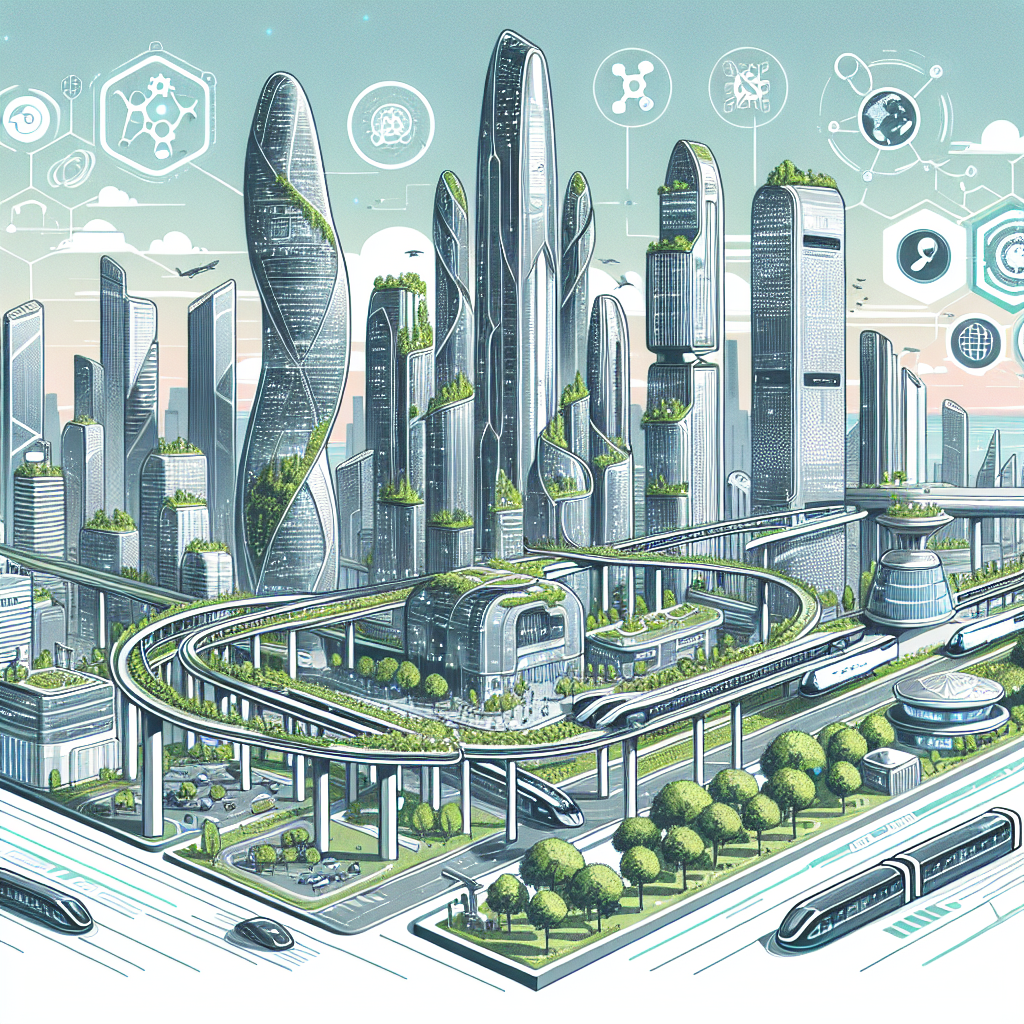Smart Cities 3.0: How AI is Driving Sustainable Urban Growth
In recent years, the concept of smart cities has gained significant traction as urban areas around the world face increasing challenges related to population growth, resource constraints, and environmental sustainability. Smart cities leverage technology and data to improve the quality of life for residents, enhance efficiency in city operations, and drive economic growth. With the emergence of artificial intelligence (AI), smart cities are entering a new phase of development known as Smart Cities 3.0, where AI is playing a critical role in driving sustainable urban growth.
What is a Smart City?
A smart city is a city that uses technology and data to enhance the quality of life for its residents, improve efficiency in city operations, and drive economic growth. Smart cities leverage a variety of technologies, including sensors, IoT devices, data analytics, and communication networks, to collect and analyze data in real-time. This data is used to inform decision-making, optimize resource allocation, and improve service delivery in areas such as transportation, energy, healthcare, and public safety.
Smart Cities 1.0 focused primarily on using technology to improve city operations and enhance service delivery. This phase of development laid the foundation for the integration of technology into urban environments and set the stage for future innovations.
Smart Cities 2.0 built upon this foundation by placing a greater emphasis on sustainability and resilience. In this phase, cities began to prioritize environmental protection, resource efficiency, and climate change mitigation. Smart Cities 2.0 also saw increased collaboration between governments, businesses, and citizens to co-create solutions to urban challenges.
Now, with the advent of AI, smart cities are entering a new phase of development known as Smart Cities 3.0. In this phase, AI is driving sustainable urban growth by enabling cities to make more informed decisions, optimize resource use, and improve service delivery in real-time.
How AI is Driving Sustainable Urban Growth
AI is revolutionizing the way cities are managed and operated, enabling them to become more efficient, sustainable, and resilient. Here are some ways in which AI is driving sustainable urban growth in Smart Cities 3.0:
1. Traffic Management: AI-powered traffic management systems use real-time data from sensors, cameras, and GPS devices to optimize traffic flow, reduce congestion, and improve air quality. By analyzing traffic patterns and predicting future demand, these systems can dynamically adjust traffic signals, reroute vehicles, and prioritize public transportation to minimize delays and emissions.
2. Energy Management: AI algorithms are being used to optimize energy consumption in buildings, streetlights, and other infrastructure. By analyzing data on energy usage, weather conditions, and occupancy patterns, AI can identify opportunities to reduce energy waste, lower costs, and decrease carbon emissions. AI-powered energy management systems can also integrate renewable energy sources, such as solar panels and wind turbines, to further enhance sustainability.
3. Waste Management: AI is being used to optimize waste collection routes, reduce landfill usage, and increase recycling rates. By analyzing data on waste generation, collection schedules, and recycling habits, AI algorithms can identify the most efficient routes for garbage trucks, predict when bins will be full, and provide real-time updates to residents on recycling options. This not only reduces costs for cities but also minimizes environmental impact and promotes a circular economy.
4. Public Safety: AI-powered public safety systems use video analytics, facial recognition, and predictive modeling to enhance security and emergency response. By analyzing video feeds from surveillance cameras, monitoring social media for potential threats, and predicting crime hotspots, AI can help law enforcement agencies prevent crimes, respond faster to emergencies, and allocate resources more effectively. This not only improves public safety but also builds trust between citizens and government.
5. Healthcare: AI is transforming healthcare delivery in smart cities by enabling remote monitoring, personalized care, and predictive analytics. AI-powered healthcare systems can analyze patient data, detect patterns of disease, and recommend personalized treatments. By leveraging wearable devices, telemedicine platforms, and AI algorithms, cities can provide better healthcare access, reduce costs, and improve health outcomes for residents.
FAQs
Q: What are the benefits of AI in smart cities?
A: AI in smart cities offers numerous benefits, including improved efficiency, enhanced sustainability, increased safety, and better quality of life for residents. By leveraging AI algorithms to analyze data, optimize resources, and automate processes, cities can make more informed decisions, reduce costs, and enhance service delivery in various sectors.
Q: What are the challenges of implementing AI in smart cities?
A: Implementing AI in smart cities can be challenging due to concerns related to data privacy, cybersecurity, ethics, and digital divide. Cities must ensure that data is collected and used responsibly, protect against cyber threats, ensure transparency in decision-making, and bridge the gap between those who have access to technology and those who do not.
Q: How can citizens get involved in shaping smart cities?
A: Citizens can get involved in shaping smart cities by participating in public consultations, providing feedback on city initiatives, volunteering for smart city projects, and advocating for policies that promote transparency, accountability, and inclusivity. By engaging with government officials, businesses, and community organizations, citizens can help co-create solutions to urban challenges and ensure that smart cities benefit everyone.
In conclusion, Smart Cities 3.0 represents a new era of urban development where AI is driving sustainable growth and innovation. By harnessing the power of AI to analyze data, optimize resources, and improve service delivery, cities can become more efficient, resilient, and inclusive. As smart cities continue to evolve, it is essential for governments, businesses, and citizens to work together to build a future where technology enhances the well-being of all residents and promotes a more sustainable urban environment.

